Could ROBOTS be the key to protecting Britain from an invasion of Asian hornets? Scientists train AI to detect the predators and raise alarms
An army of AI robots fighting off an invasion of giant insects may sound like dodgy science fiction, but scientists say it could soon become a reality.
Asian hornets have already established themselves in much of Europe, Asia and the US, leaving Britain on the edge of the predators’ ‘European invasion front’.
Now scientists from the University of Exeter have trained an AI to spot the hornets before they have a chance to spread.
VespAI, as the researchers have dubbed the system, can automatically attract, record and identify the invasive insects with near-perfect accuracy.
“VespAI shows promise as a robust early warning system to detect the incursion of Asian hornets into new regions,” said co-author Dr. Thomas O’Shea-Wheller.
Scientists have developed an AI system that can sound the alarm if it detects invasive Asian hornets
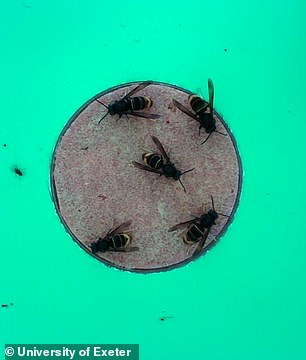
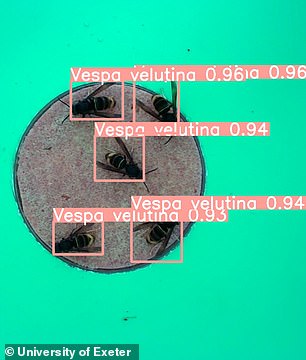
The system uses an overhead camera to capture insects in a bait station. Once they arrive, the system automatically identifies whether they are Asian (right) or European hornets
VespAI consists of a ‘bait station’ that lures hornets and other insects to land under an overhead camera.
The camera station remains idle until it detects something about the size of a hornet.
Once active, VespAI records all insects in the baited trap and uses artificial intelligence to identify whether any of the insects are Asian hornets.
If hornets are detected, the system sends a notification to the operator so that he can inform the authorities to find and destroy the nest.
The researchers say the system can distinguish invasive hornets from the native European hornet with “almost perfect accuracy.”
Dr. O’Shea-Wheller says: ‘Our goal was to develop something cost-effective and versatile so that everyone – from governments to individual beekeepers – could use it.’
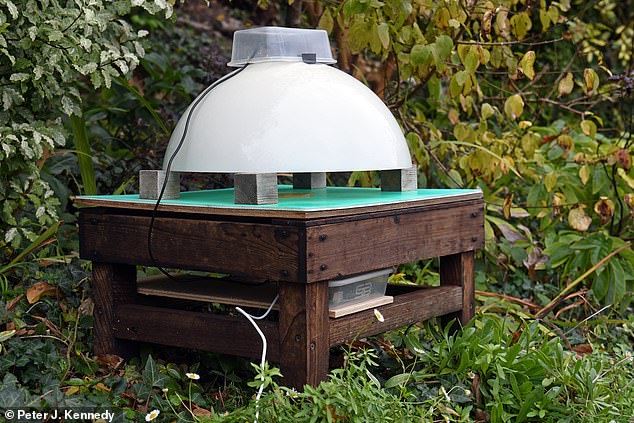
The researchers say these traps (pictured) are designed to be cheap and versatile so they can be deployed by beekeepers
Britain is currently facing the biggest invasion of Asian hornets in recent years.
In 2023, there were 78 sightings leading to the destruction of 54 nests, compared to just two sightings in 2022.
If the hornets become established, the stinging insects could pose a danger to people and Britain’s native insects.
Each of the approximately 700 hornets in a nest can eat 50 honeybees at a time, potentially devastating wild and farmed beehives.
And while their stings are usually not fatal, repeated stings can lead to kidney failure and anaphylactic reactions.
In Japan, where the hornets are native, their stings cause between 30 and 50 deaths per year.
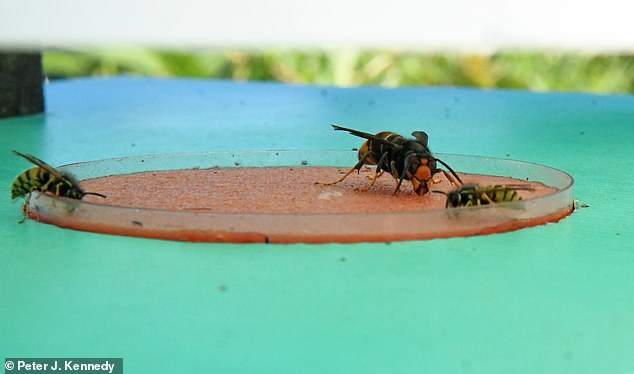
The system was tested on the island of Jersey, where it was able to distinguish between Asian hornets, European hornets and other insects such as wasps with near-perfect accuracy.
Britain’s current strategy relies on individuals noticing, identifying and reporting the invasive insects.
But while their smaller size and yellow legs make them quite distinctive, misidentifications are common.
Dr. Peter Kennedy, a behavioral ecologist from the University of Exeter who conceptualized the system, says: ‘Unfortunately, the majority of reports submitted are of misidentified native species.’
This means that environmental agencies must manually validate thousands of reported images every year.
Other systems used in Europe capture and kill hornets for later identification. However, these traps kill large numbers of native species in addition to hornets.
“So our system aims to provide a vigilant, accurate and automated surveillance capability to address this,” says Dr. Kennedy.
VespAI has already been extensively tested on the island of Jersey, which due to its proximity to France has large numbers of both European and Asian hornets.
The researchers say these tests showed that the system could detect Asian hornets even when large numbers of insects were present in the bait station.
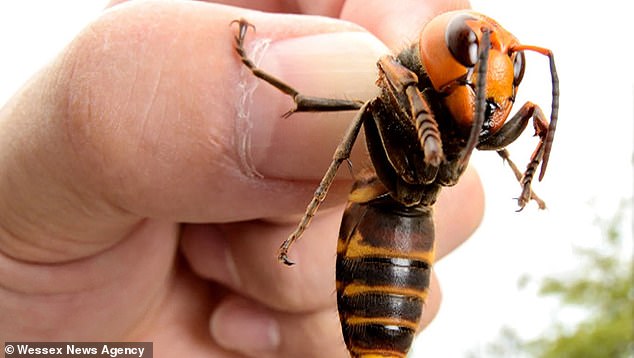
Britain is facing record sightings of Asian hornets (pictured), raising concerns the invasive insects could become established
This could be a useful tool to help authorities destroy hornet nests before they can disperse fertile queens – known as ‘goynes’ – and establish a breeding population.
Later this year, the scientists will begin deploying additional VespAI prototypes in collaboration with the Ministry of Food and Rural Affairs.
Alistair Christie, Senior Scientific Officer for Invasive Species in Jersey, said: ‘The proposed device could prove a powerful tool in early detection of the presence of Asian hornets in an area, filling an important gap.’
